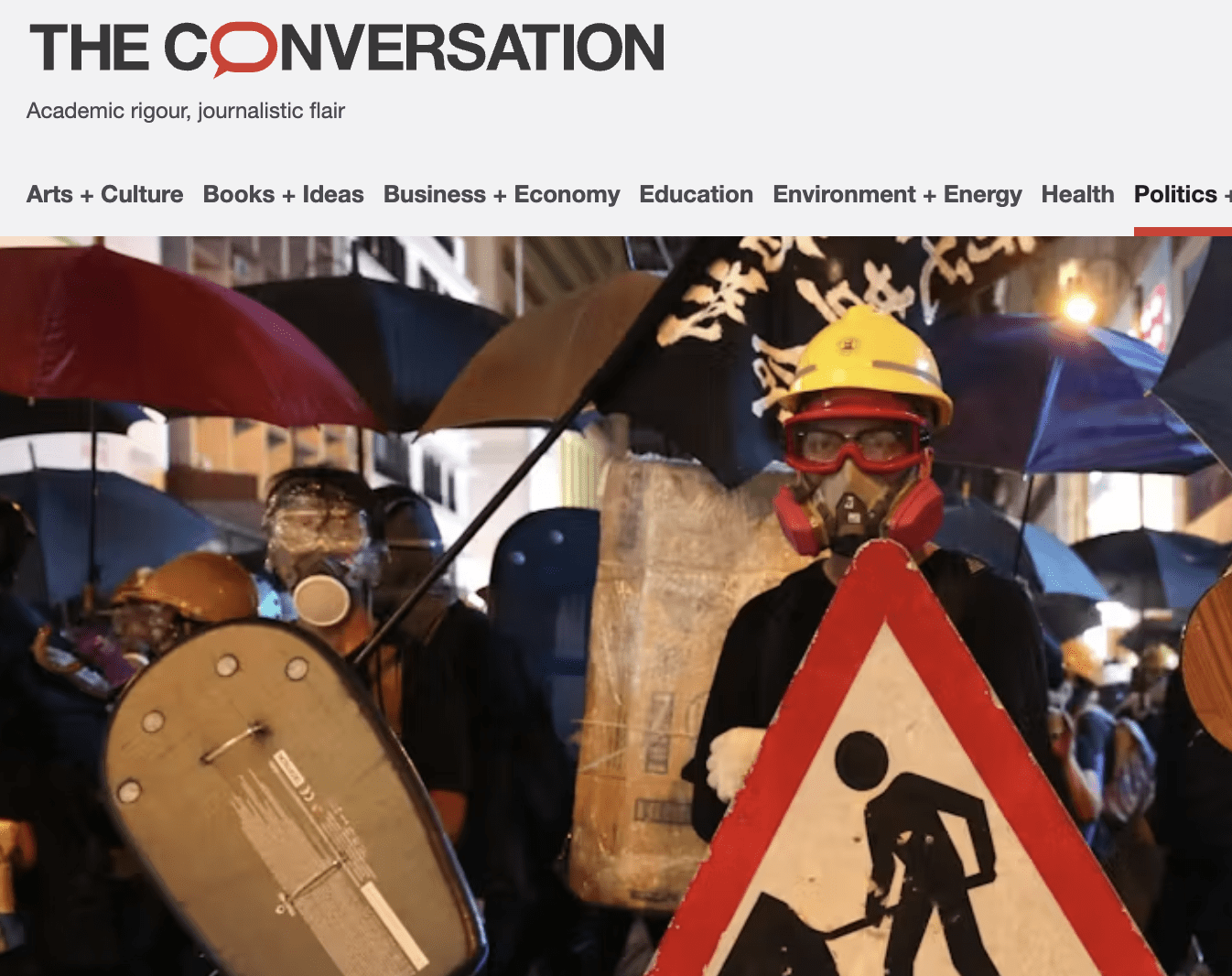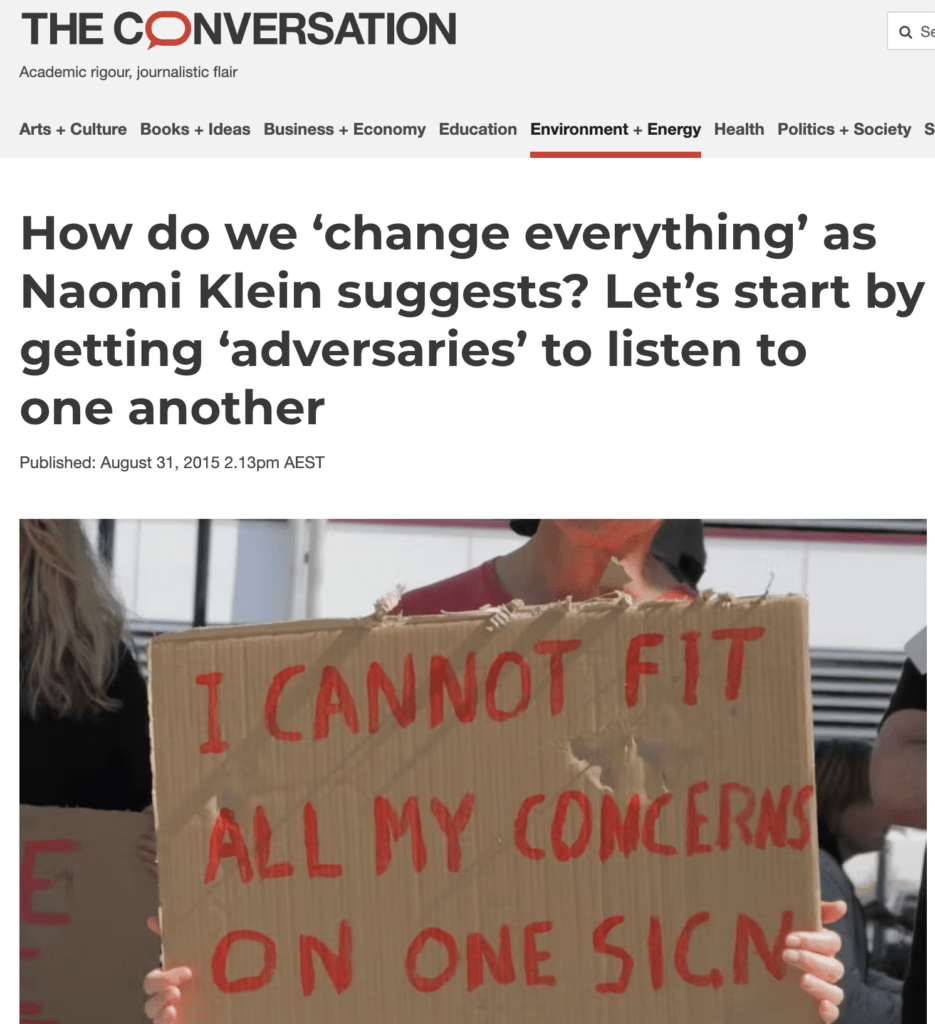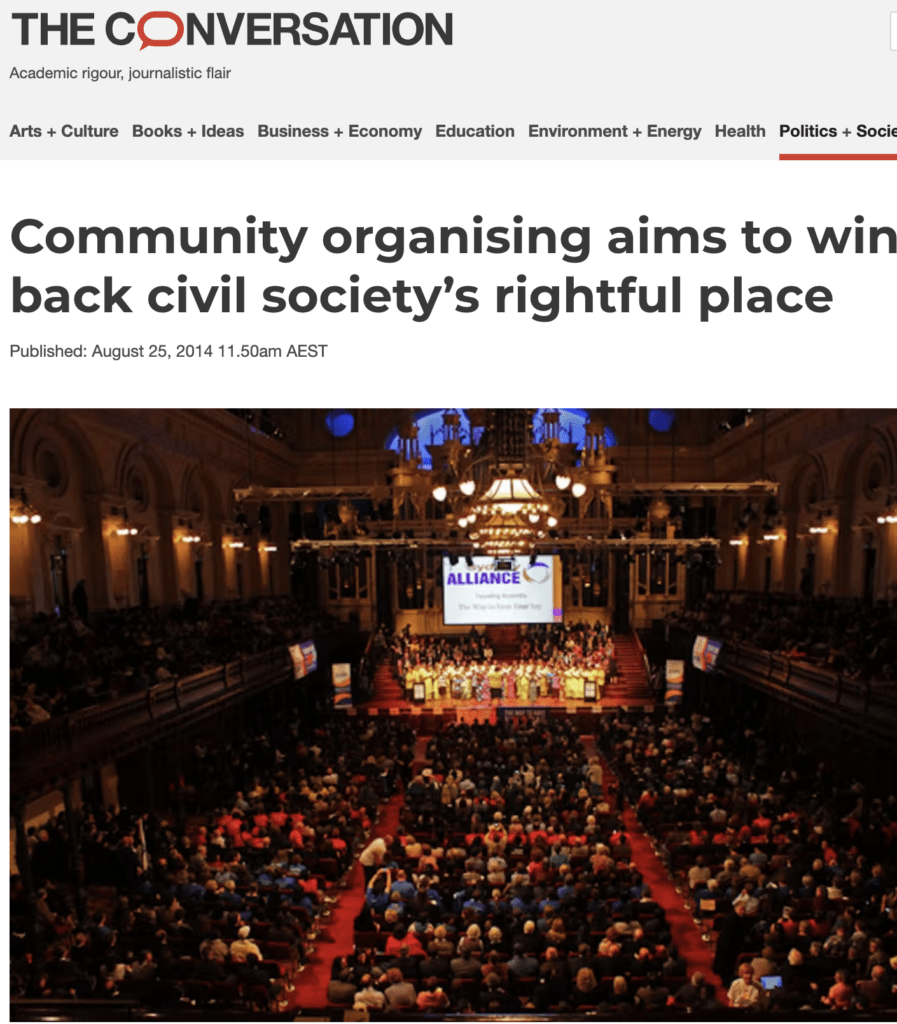Blogs & Speeches
The Hong Kong protesters have turned militant and more strategic – and this unnerves Beijing
The Hong Kong protests were underpinned by a series of sophisticated principles and practices that others can learn from to sustain public protest.
The first instalment in a series of Conversation articles the 2019 Hong Kong protest movement. This article examined some of the history behind the mobilising strategy being used by protesters in the city.
Citation:
Tattersall, A. (2019) The Hong Kong protesters have turned militant and more strategic – and this unnerves Beijing. Conversation, Aug 2.
Overview
The past few weeks has seen a drastic escalation in violence on the streets of Hong Kong. On Tuesday night, a police officer aimed a shotgun at protesters who had gathered outside a police station, while a car launched fireworks into the crowd.
Days earlier, the police fired rubber bullets and tear gas at protesters trying to reach the Chinese government’s office.
And the week before, following a protest of 430,000 people, vigilante thugs, dressed in white and carrying bamboo sticks, beat up democracy protesters at a train station.
This long summer of protests began in response to a proposed extradition bill just days after the 30th anniversary of the Tiananmen Square massacre. But now, over eight weeks on, the protesters continue to take to the streets with a broader set of demands – and the confrontations with police are threatening to spiral out of control.
With reports of a build-up of Chinese forces on the Hong Kong border, and no end in sight to the demonstrations, many are now asking – how will this end?
Conflict arising from the Umbrella movement
Protest is a familiar tactic in Hong Kong, but this movement has adopted a series of new approaches from the lessons of other protests over the last 30 years – in particular the failures of the 2014 Umbrella Movement.
In doing so, they are building something that is – at least until now – showing resilience to Beijing’s authoritarianism.
The current protest movement isn’t a single movement. It has two dominant wings – one is passive, the other more militant. These wings accept and recognise each other’s role.
This is new. In 2014, Hong Kong democracy leaders staged a 79-day occupation to fight for universal suffrage. Called the Umbrella Movement, the occupation had two sets of leaders – older democracy leaders (known as the Occupy Trio) and younger student leaders (notably Joshua Wong and Nathan Law).
Originally, the Occupy Trio had planned a multi-year campaign to build public and political pressure for universal suffrage, but the students were more confrontational. They staged a sit-in at Civic Square on Hong Kong Island and the occupation was off and running.
During the occupation, these different views led to irreconcilable conflict, making it impossible to talk about overall strategy. When the occupation finally ended – without achieving universal suffrage – there was great acrimony between the groups that lasted for years.
A new set of principles
Realising how counter-productive this split was, the protesters were keen not to let strategic differences get in the way this time around.
As organisers made plans for the June 9 rally against the extradition bill, several new principles emerged to define how the different groups could work together and avoid falling into the deep conflict of the past.
They included such maxims as “respect the role of the different groups”, “we all lead”, “no one is left behind” and “be water” (as in, to flow from place to place, building continuous pressure). More than the power of any individual leader, these principles came to define how the movement would function and grow.

More work

Endure or peter out? Here’s what Northern Rivers organisers and Stop Adani can teach us about organising climate groups
Over the last decade, several groups in Australia have successfully mobilised against fossil fuel interests. But which ones have gone…

How do we ‘change everything’ as Naomi Klein suggests? Let’s start by getting ‘adversaries’ to listen to one another
The kind of social movement required to respond to climate change will need to be far broader and…

Community organising aims to win back civil society’s rightful place
How Saul Alinksy’s Chicago approach to community organising is finding a home in Sydney.